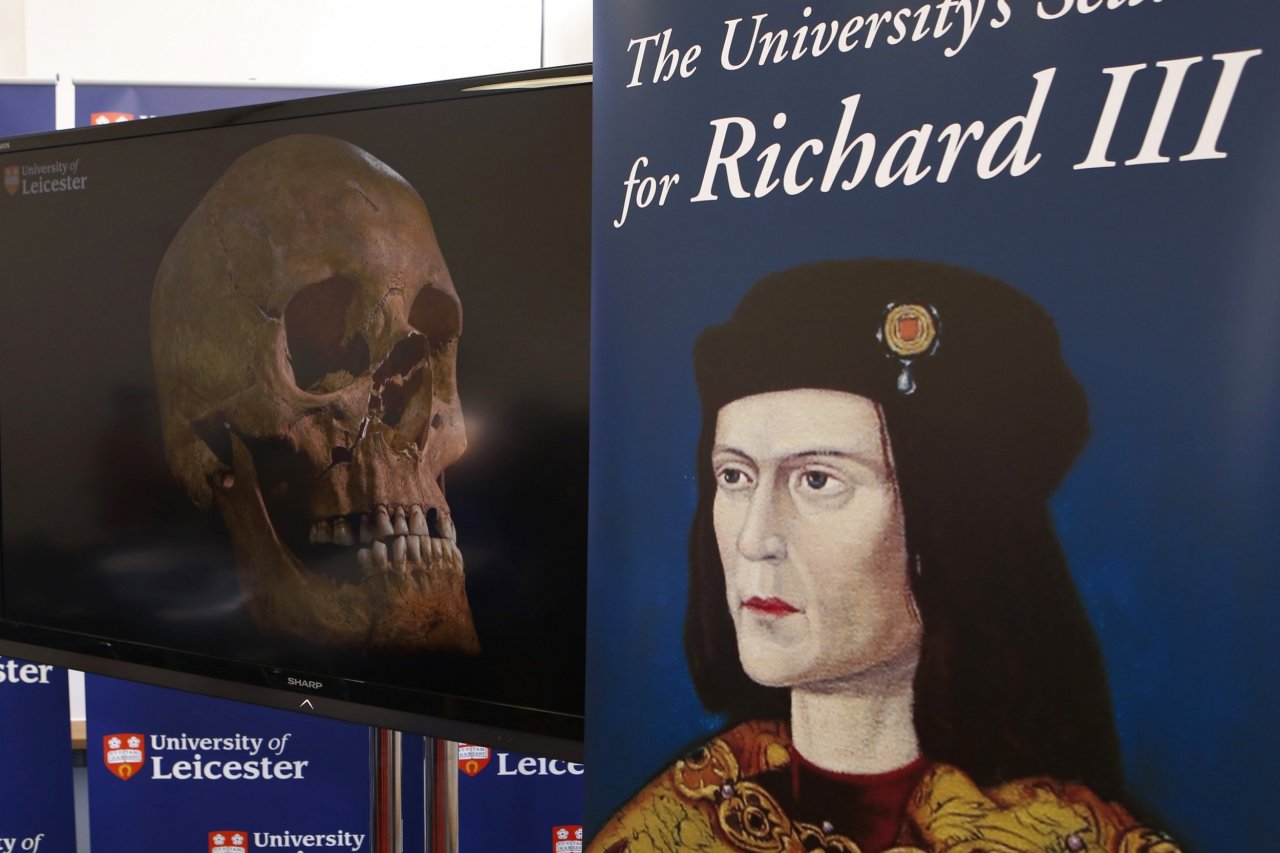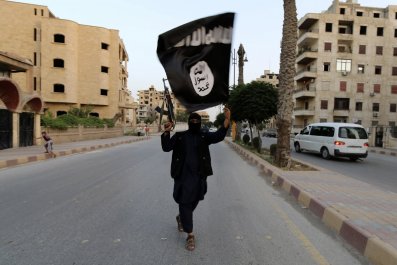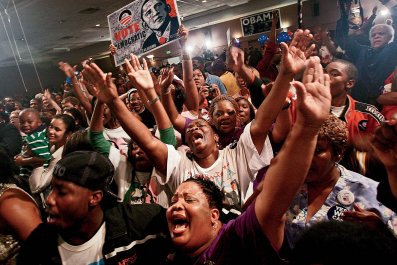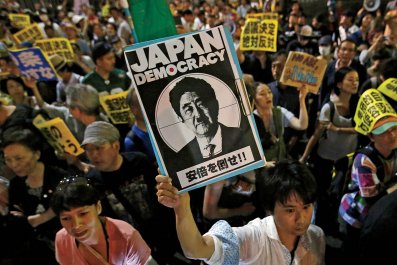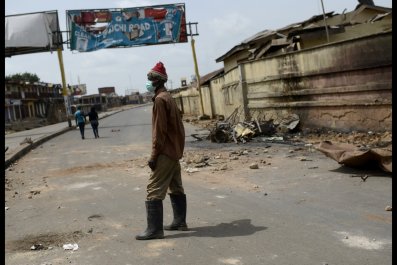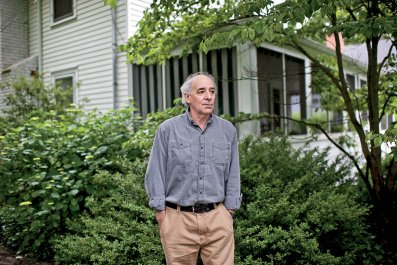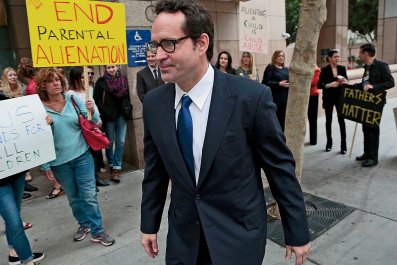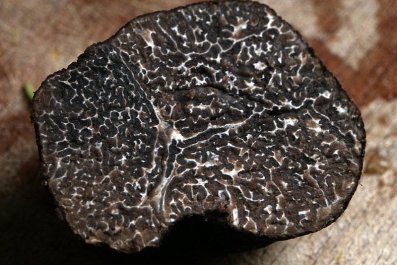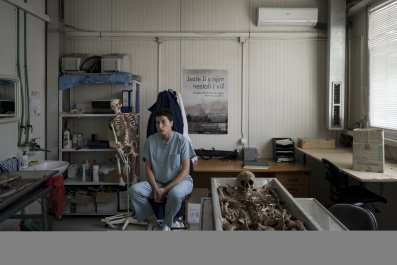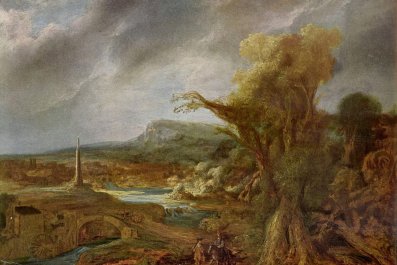We now know where Richard III is going to be buried and what his tomb will look like, since the English king's remains were discovered under a Leicester car park last year. But what kind of man was he?
He has been called a "maligned king", a victim of Tudor propaganda, accused by Shakespeare of ordering the deaths of the "Princes in the Tower". But the truth is, Shakespeare was right. The king, who is to be buried with great honour in Leicester Cathedral in the spring of next year, was a child -murderer.
For me the truth emerged as I researched Tudor: The Family Story, only when I stopped thinking like a 21st-century person, and began thinking like someone from the 15th, when the murders took place.
In the summer of 1483 the 12-year-old Edward V, and his nine-year-old brother were imprisoned in the Tower. The boys had been declared illegitimate, allowing their uncle to become king in their place. According to Shakespeare, Richard III wanted to go further, and in the play he declares: "I wish the bastards dead."
Thomas More's The History of Richard III, which influenced Shakespeare's play, describes how Richard's killers went into the princes' bedchamber, "lapped them up among the bedclothes .?.?. keeping down by force the featherbed and pillows hard unto their mouths" until they were "stifled".But More's history was inaccurate and biased, written as it was during the reign of Henry VIII. He was the son of Richard's archrival, Henry VII, the first Tudor king who won the crown, after defeating Richard on the battlefield. All that is known for certain is that the princes vanished in 1483. bodies were displayed by Richard III, or found by Henry VII. And after the passing of the Tudor dynasty, people began to question Tudor accounts of Richard's guilt.
The most popular work to argue his innocence is Josephine Tey's 1951 crime novel, Daughter of Time. It has inspired generations of readers to join the Richard III Society, which campaigns for a re-assessment of Shakespeare's portrayal of the king. It was a member of this society who raised the money for the archaeological dig that discovered Richard's body.
Tey's novel features a modern detective investigating the historic murder of the princes. He believes that if the princes were illegitimate (it was claimed their father, Edward IV, had married their mother bigamously), Richard III had no motive to kill them. The detective also argues that since there is no hard evidence they died in 1483 they might still have been alive in 1485 when Henry Tudor became Henry VII.
With Richard III killed at the battle of Bosworth, the new Tudor king had to justify his rule. His right in blood was extremely weak, drawn as it was through an illegitimate female line. But Henry VII married the sister of the princes, Elizabeth of York, after having had Edward IV's children declared legitimate, to strengthen her claim to be the senior heir to the House of York. It strikes Tey's detective that if the princes were alive their right was superior to their sister's, giving Henry Tudor a motive to kill them and cast the blame on Richard. Was it, in any case, in character for Richard III to commit such a terrible crime? He was a religious man and, in many respects, a fine king. And if
Richard was guilty, why did Henry VII make no effort to institute any inquest into the deaths of the princes?
To start thinking like a 15th-century king, instead of a modern detective, the first thing to understand is that it was a primary, even religious, duty of good kingship to ensure national unity. After Richard's coronation on July 6th 1483, it was clear not everyone accepted the princes were illegitimate, and they remained a focus of opposition and division. Richard did, therefore, have a motive to kill them, just as his brother, Edward IV, had killed the king he had deposed.
The mentally-ill Lancastrian Henry VI had been found dead in the Tower in 1471. It was said he had died suddenly of "grief and rage" over the death of his son in battle. But few can have doubted Edward IV had ordered his murder. The death wiped out the House of Lancaster, leaving only Henry Tudor, a descendent of the Lancastrian House, through his mother's illegitimate Beaufort line, to represent their cause.
Henry was in exile in Brittany in 1483 when Edward IV died and Richard overthrew the princes to become Richard III. -Londoners, remembering the fate of Henry?VI, feared for the children. A foreign visitor described men weeping in the streets as "day by day they began to be seen more rarely behind the bars" of the Tower's windows.
By October 1483 rumours the princes had been murdered was fuelling a rebellion. If the boys were still alive it seems strange Richard did not say so. But equally if the princes were dead why did Richard not follow the example of earlier royal killings? The bodies of deposed kings were displayed, and it was claimed they had died of natural causes (like grief and rage) so loyalties could be transferred to the new king.
It is the disappearance of the princes that lies at the heart of all the conspiracy theories about what happened to them. The solution lies in a sequel to Henry VI's murder that was forgotten after the Reformation. The mad king had been popularly acclaimed a saint, with miracles reported at the site of his modest grave in Chertsey Abbey, Surrey. Edward IV failed to suppress this explosive cult and Richard was well aware of its power. He would move Henry VI's body to be buried alongside Edward IV at St George's Chapel Windsor, in an act of reconciliation and in an effort to gain some control over the cult. But he knew there was a high risk the princes would attract a still greater cult, for in them the religious qualities attached to royalty were combined with the innocence and purity of childhood. Having the princes vanish suited Richard, for without a grave there could be no focus for a cult, and without bodies there would be no relics either.
Nevertheless, Richard wanted the Edwardian Yorkists to know the princes were dead so they would transfer their loyalties to him. But when their mother, Elizabeth Woodville, was given the news she called for vengeance, and Henry Tudor's mother, Margaret Beaufort, suggested how she might get it. A promised marriage between Henry and Elizabeth of York would unite the old Lancastrian affinity with Edwardian Yorkists and bring Richard down.
Richard crushed the October rebellion that -followed and by 1485 a despairing Elizabeth Woodville had accepted Richard as king. But Henry fought on, and at the battle of Bosworth emerged victorious. So why did Henry now do nothing publicly to investigate the fate of the princes? Well, it is possible Henry feared this would draw attention to some role in the murders played by someone close to his cause.
A document in the College of Arms, dating to around 1512, says the princes were killed "by the 'vise'" [advice or device] of a royal cousin of Margaret's: Henry Stafford, Duke of Buckingham. He had been a close ally of Richard's in the overthrow of the princes, but then turned against Richard and plotted the October rebellion with Margaret. Buckingham may have encouraged Richard to have the princes murdered, hoping to see the House of York extinguished, and that of Lancaster restored, with Henry Tudor, or himself, as king. It is even possible Buckingham was acting on Margaret's advice, as she hoped to clear the way for her son. But this does not absolve Richard.
The Lieutenant of the Tower, who controlled access to the princes, was completely loyal to Richard. Without the king's word, he would never have permitted their murder. When Richard executed Buckingham for his part in the October rebellion, he never accused him of killing the princes. The real reason Henry Tudor did not look for the bodies of the princes is that he had his own reasons for wishing to forestall a cult.
It is true Henry's blood claim to the throne was extremely weak. Yet he was determined not to be seen as a mere king consort to his wife. Henry did not base his right on her legitimacy, but on divine providence. To prove his case, Henry argued that before the saint Henry VI, was murdered, the holy man had prophesied his rule. God's will was confirmed by the victory at Bosworth. It would have been unwise to allow Yorkist royal saints to compete with the memory of Henry VI, whose cult Henry VII now encouraged. Nothing was said therefore of the princes in 1485, beyond the vague accusation in parliament that Richard III was guilty of "murders in shedding of infants' blood".
The danger for Henry was that there was still no real proof the princes were dead. As Henry's enemies sought a figurehead to rally round, it was a question they took advantage of. In 1491 a young man appeared in Ireland, claiming to be the younger of the Princes in the Tower. He said one of the assassins had helped him escape -– he could not bring himself to kill "so little a child". Henry said he was, in fact, a Dutchman known as Perkin Warbeck, and in the pay of foreign powers. But who could be sure? Warbeck led three invasion attempts on England before his capture in 1497. Henry then kept him alive to publicly confess his modest birth. But even after Warbeck's execution in 1499, Henry continued to fear the emergence of other "pretenders".
In May 1502, a condemned traitor called Sir James Tyrell supposedly confessed before his execution to murdering the princes on Richard's orders. Thomas More tells us that Tyrell claimed the boys had been buried at the foot of some stairs in the Tower, "under a great heap of stones", but that Richard had asked for their bodies to be re-buried somewhere more dignified. Those involved had subsequently died, so their final resting place was unknown – a suspiciously convenient outcome for Henry VII. Richard's reputation was again condemned, the deaths of the princes "confirmed", and their graves lost. Meanwhile, the tomb of the "saint" Henry VI had come to rival in popularity that of Thomas Becket at Canterbury, one of the top three pilgrimage sites in Europe. Thousands were still visiting it in 1533, the year Henry VIII broke with Rome. But the Reformation brought to a close the cult of saints and our memory of them faded, along with our understanding of why Richard had the princes disappear, and why Henry did nothing to find them.
In 1674, the skeletons of two children were recovered in the Tower, in a place that resembled More's description of their first burial place. Whoever they are, as the grand tomb of Richard III is being built in Leicester Cathedral, we might remember how the Princes in the Tower were denied any decent burial at all.
Tudor: The Family Story by Leanda de Lisle is published by Vintage.



